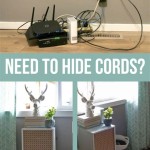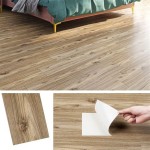Hardwood Flooring: A Comprehensive Guide to Cleaning and Maintenance
Hardwood floors offer a timeless elegance and durability that make them a popular choice for homeowners. However, maintaining their beauty requires consistent cleaning and proper care. This article provides a detailed guide on how to clean hardwood floors effectively and safely, ensuring their longevity and preserving their aesthetic appeal.
Understanding the type of finish applied to the hardwood floor is crucial before commencing any cleaning process. Different finishes require different cleaning methods. Surface finishes, such as polyurethane, are water-resistant and generally easier to clean. Penetrating finishes, like oil-based finishes, require more careful consideration to avoid damage or discoloration. Determining the finish type is the first step toward effective and safe hardwood floor cleaning.
Identifying Your Hardwood Floor Finish
The "water drop test" is a simple method to identify the type of finish on a hardwood floor. Place a few drops of water on the floor surface. If the water beads up, the floor likely has a surface finish, such as polyurethane. If the water is absorbed into the wood, the floor likely has a penetrating finish, such as oil or wax. This test provides a preliminary indication; consulting with a flooring professional is advisable for definitive identification.
Another indicator is the age of the flooring. Older floors are more likely to have penetrating finishes, while newer floors are typically coated with polyurethane or similar surface finishes due to their durability and ease of maintenance. Reviewing any documentation from the floor's installation or consulting with the previous homeowner can also provide valuable information.
Once the finish type is identified, the appropriate cleaning methods and products can be selected. Using the wrong cleaning agents can lead to damage, discoloration, and a dull appearance. Therefore, accurate identification is paramount.
Regular Cleaning Practices for Hardwood Floors
Regular cleaning is essential to prevent the buildup of dirt, dust, and debris, which can scratch and damage the floor's finish. This maintenance routine should include sweeping, vacuuming, and occasional damp mopping, all performed with the appropriate tools and techniques.
Sweeping should be conducted regularly, ideally daily or every other day, depending on foot traffic. A soft-bristled broom is recommended to avoid scratching the floor. Push the dirt and debris into a dustpan, ensuring all areas, including corners and edges, are thoroughly cleaned.
Vacuuming provides a more thorough cleaning than sweeping, removing fine particles that can accumulate in the grain of the wood. Use a vacuum cleaner with a soft brush attachment to avoid scratching the floor's surface. Ensure the vacuum's beater bar is disengaged or turned off, as the rotating brush can damage the finish. Vacuum in the direction of the wood grain for optimal cleaning.
Damp mopping should be performed less frequently than sweeping or vacuuming, typically once or twice a month, depending on the level of foot traffic and dirt accumulation. Use a microfiber mop and a pH-neutral hardwood floor cleaner. Avoid using excessive water, as moisture can damage the wood. Wring out the mop thoroughly to ensure it is only damp, not wet.
When damp mopping, work in sections, mopping in the direction of the wood grain. Rinse the mop frequently in a separate bucket of clean water to avoid spreading dirt and grime. After mopping, allow the floor to air dry completely. Opening windows or using a fan can expedite the drying process.
Spills should be cleaned immediately to prevent staining and water damage. Use a soft cloth or paper towel to blot the spill, working from the outside toward the center to prevent spreading. Avoid rubbing the spill, as this can damage the finish. Once the spill is absorbed, clean the area with a damp cloth and a pH-neutral hardwood floor cleaner.
Addressing Common Hardwood Floor Cleaning Challenges
Despite regular cleaning, hardwood floors can encounter specific challenges, such as stubborn stains, scuff marks, and dullness. Addressing these issues requires targeted cleaning techniques and appropriate products.
Stubborn stains, such as those caused by pet accidents or food spills, may require specific stain removal techniques. For pet stains, use an enzymatic cleaner designed for hardwood floors. These cleaners break down the organic compounds in the stain, effectively removing the odor and preventing further damage. Apply the cleaner according to the manufacturer's instructions, and allow it to dwell on the stain for the recommended time before blotting it away with a clean cloth.
Food stains can often be removed with a mixture of water and a mild dish soap. Apply the solution to the stain, let it sit for a few minutes, and then blot it away with a clean cloth. Rinse the area with a damp cloth and dry it thoroughly.
Scuff marks, often caused by shoes or furniture, can be removed with a clean tennis ball or a specialized scuff mark remover. Gently rub the tennis ball over the scuff mark until it disappears. Alternatively, apply a small amount of scuff mark remover to a clean cloth and rub it gently over the mark. Wipe away any residue with a damp cloth.
Dullness can be caused by a buildup of wax or cleaning product residue. To restore the floor's shine, use a hardwood floor restorer or polish. Apply the product according to the manufacturer's instructions, typically using a microfiber mop or applicator pad. Avoid using excessive amounts of product, as this can leave a sticky residue.
For significant damage, such as deep scratches or gouges, professional refinishing may be necessary. Refinishing involves sanding down the existing finish and applying a new coat of sealant, restoring the floor to its original condition. Consult with a flooring professional to determine the best course of action.
Preventative measures are crucial to minimizing cleaning challenges. Use rugs and mats in high-traffic areas to protect the floor from dirt and scratches. Place felt pads under furniture legs to prevent scuff marks. Avoid wearing shoes with high heels on the hardwood floor. Regularly trim pet nails to prevent scratches. These simple precautions can significantly reduce the need for intensive cleaning and maintenance.
Choosing the right cleaning products is also vital. Always opt for pH-neutral cleaners specifically designed for hardwood floors. Avoid using harsh chemicals, such as bleach or ammonia, as these can damage the finish and discolor the wood. Read the product label carefully and follow the manufacturer's instructions. Test the cleaner in an inconspicuous area before applying it to the entire floor.
Maintaining hardwood floors requires a consistent and informed approach. By identifying the floor's finish, implementing regular cleaning practices, and addressing common challenges with appropriate techniques, the beauty and longevity of hardwood floors can be preserved. Professional consultation is recommended for complex issues or when unsure about the best course of action.

How To Clean Hardwood Floors Reviews By Wirecutter

How To Clean Hardwood Floors Without Damaging Them

How To Clean Hardwood Floors Like A Pro

2024 Best Tips For Keeping Your Hardwood Floors Clean And Polished

How To Clean And Shine Hardwood Floors Fast Easy Tips

How To Clean Wood Floors Carefully And Deeply O Cedar

How To Clean Your Hardwood Floors

Naturally Clean And Shine Hardwood Floors The Ultimate Guide Flooring Design

Wood Floor Deep Cleaning Re Coat Union

Best Ways To Clean Your Wood Floors Deluca Cleaning








